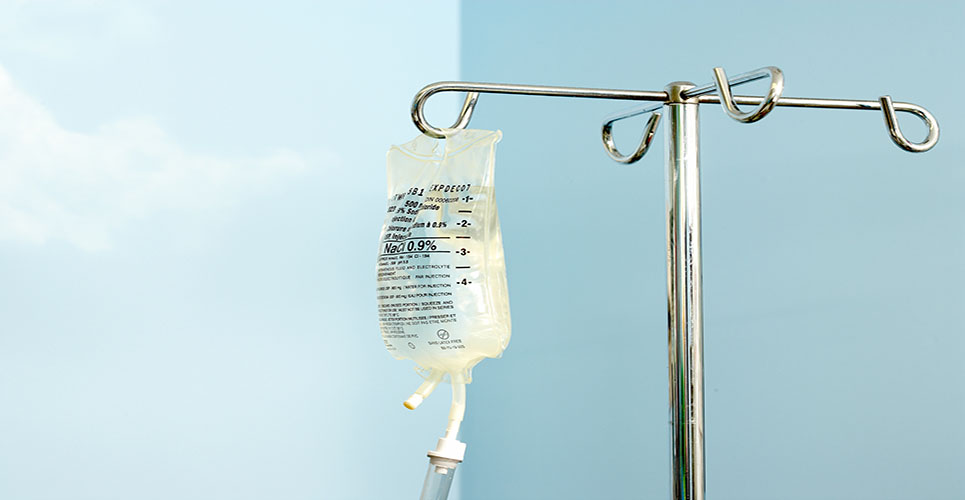teaser
Linda Baker
Medical Devices Educator
UK
Medication errors have, in recent years, had more headlines in the medical press than ever before. Many causes and effects have been identified, and every aspect of the delivery process, from prescription to delivery, can have an influence on overall safety. Infusion devices and their associated infusion sets are an important area of safety, with standardisation, free-flow protection and ease of use being key aspects of safe, integrated infusion systems.
[[HPE29_box1_79]]
Standardisation is easy
Previous publications have clearly identified that reducing the number of different devices doing the same function would help reduce the risk of errors. However, standardising through choosing one specialist supplier is an important decision for a caregiving organisation to make. Many considerations need to be taken into account. The company’s financial stability and infrastructure to offer best-in-class customer support, both technically and clinically, is crucial. The industry is moving towards a computer-influenced level of technology where connectivity to other systems, such as patient data management systems (PDMS) and hospital information systems (HIS), will become a major influence on the choice of supplier. Training, ease of use and support infrastructure then take on a higher level of priority.
One cautionary note on standardisation is that some manufacturers have made their infusion devices look and feel the same across the product range. This is good practice in terms of operation; however, enabling the different products, such as syringe pumps versus volumetric pumps, to be easily identified individually while retaining a common user interface is equally as important.
Free-flow protection
What is free flow? Free flow is any occurrence involving the accidental administration of IV fluids when a controlled or metered delivery was intended. Causes of free flow include users forgetting to close clamps on administration sets, pump doors being left open and (more rarely) component failure on the administration set.
While very little has been published on the actual occurrence of accidental free flow in recent years, a number of international journals have supported the proposal that hospitals should not buy pumps that do not include set-based free-flow protection. Technological advances achieved by many pump manufacturers have resulted in the inclusion of set-based free-flow protection in many infusion systems, in line with safety recommendations from bodies such as the UK’s Medicines and Healthcare products Regulatory Agency (MHRA, previously known as the Medical Devices Agency).(1) ECRI, through its monthly journal Health Devices, and in cooperation with the Joint Commission on Accreditation of Healthcare Organisations (JCAHO), continues to offer guidance to help hospitals avoid the dangers of free flow.(2) JCAHO-accredited hospitals are now required to show compliance with ECRI recommendations, “to improve the safety of using infusion pumps through the exclusive use of free-flow-protected general-purpose and patient- controlled analgesia infusion pumps”.(3)
However, it would be premature to assume that all infusion pumps currently in use feature set-based free-flow protection. In ECRI’s 2003 Special Report on general-purpose infusion pumps, ECRI categorised 70 infusion pumps. The report cites 28 models as “not providing adequate free flow protection” in any infusion circumstances.(3) Set-based free-flow protection is still very much an option rather than “comes as standard”. Safety versus economy is a familiar scenario to many hospital �purchasers. When choosing a new infusion system there is always a temptation to be influenced by the availability of basic administration sets lacking key safety features. Clearly, the consequences of failing to heed published guidelines need careful forethought.
Consequences of free flow
There are well-documented cases of death and serious injury as a result of free flow. As far back as 1992, Health Devices cited a case of a mother in the delivery room who received nearly 35 times the prescribed amount of Pitocin (to accelerate contractions). The infant suffered organ damage, developed pneumonia and died four days later.(4)
Ease of use
User acceptance of the device normally requires some degree of testing before selection. The ease of use is challenged at this point and usually includes features such as the ability to read the display at distance, load the infusion set into the device simply, set a rate and get the pump running quickly all of which are relatively basic, yet can be major factors. Practical considerations that can affect the day-to-day use of the device need to be noted. Devices that require a number of accessories to enable them to be used in various applications and during transport can cause inconveniences. Accessories in a caregiving environment are notoriously easy to lose or damage when not in use, and fewer accessories should help to reduce device downtime and wasted nursing time.
Conclusion
When making the important decision of selecting a supplier for standardisation to improve safety, many factors need to be considered. Value for money rarely bears any relation to lowest price. Value and quality are more likely to be identified in the supporting services. Quality is remembered long after the price is forgotten.
References
- Infusion Systems Device Bulletin. MDA DB2003 (02) March 2003.
- JCAHO’s National patient safety goal for infusion pump free flow protection: ECRI’s assessment of the protection offered by general purpose, PCA, and ambulatory pumps. Health Devices 2004;33:430-5.
- ECRI Newsroom report: JCAHO calls ECRI “Authoritative Source” for Infusion Pump Safety Information,16 April 2003.
- IV free flow � still a cause for alarm. Health Devices 1992;21:323-8.
- Kohn LT, Corrigan JM, Donaldson MS, editors. To err is human: building a safer health system. Washington (DC): National Academies Press; 1999.

